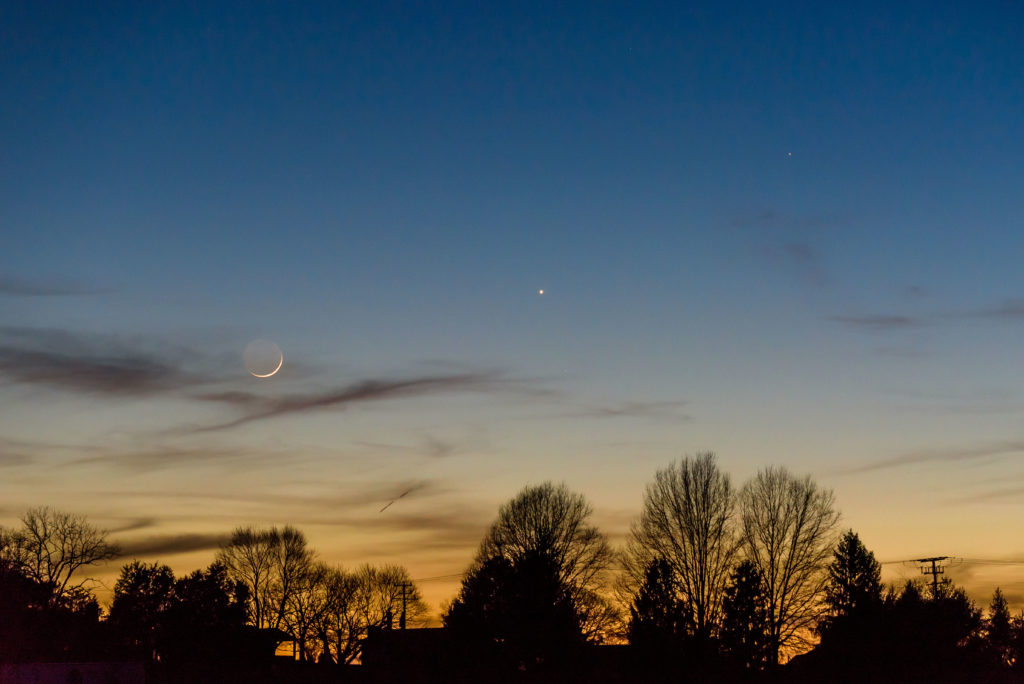“What good is the warmth of summer, without the cold of winter to give it sweetness.”
― John Steinbeck
On December 21, 2018 at 22:23 Universal Time, the Sun reaches the December solstice, its most southern point on the ecliptic. This marks the first day of winter in the northern hemisphere and the first day of summer in the southern hemisphere [Read more…] about The Golden Light of a Winter Solstice
Share This: The last Sunday of northern winter in 2018 brought a clear and dry night for stargazing in the Washington, D.C. area. In this image, taken from The Plains, Virginia, shows a slender crescent Moon just 3% illuminated by the Sun’s light. The Moon is joined by the two inner planets Venus (brighter, at center) and Mercury (upper right). Mercury has just passed its greatest eastern elongation and will now begin quickly moving back toward the Sun. Venus moves in the opposite direction, more languorously, as it slowly gets higher and brighter in the coming weeks.
The last Sunday of northern winter in 2018 brought a clear and dry night for stargazing in the Washington, D.C. area. In this image, taken from The Plains, Virginia, shows a slender crescent Moon just 3% illuminated by the Sun’s light. The Moon is joined by the two inner planets Venus (brighter, at center) and Mercury (upper right). Mercury has just passed its greatest eastern elongation and will now begin quickly moving back toward the Sun. Venus moves in the opposite direction, more languorously, as it slowly gets higher and brighter in the coming weeks.

